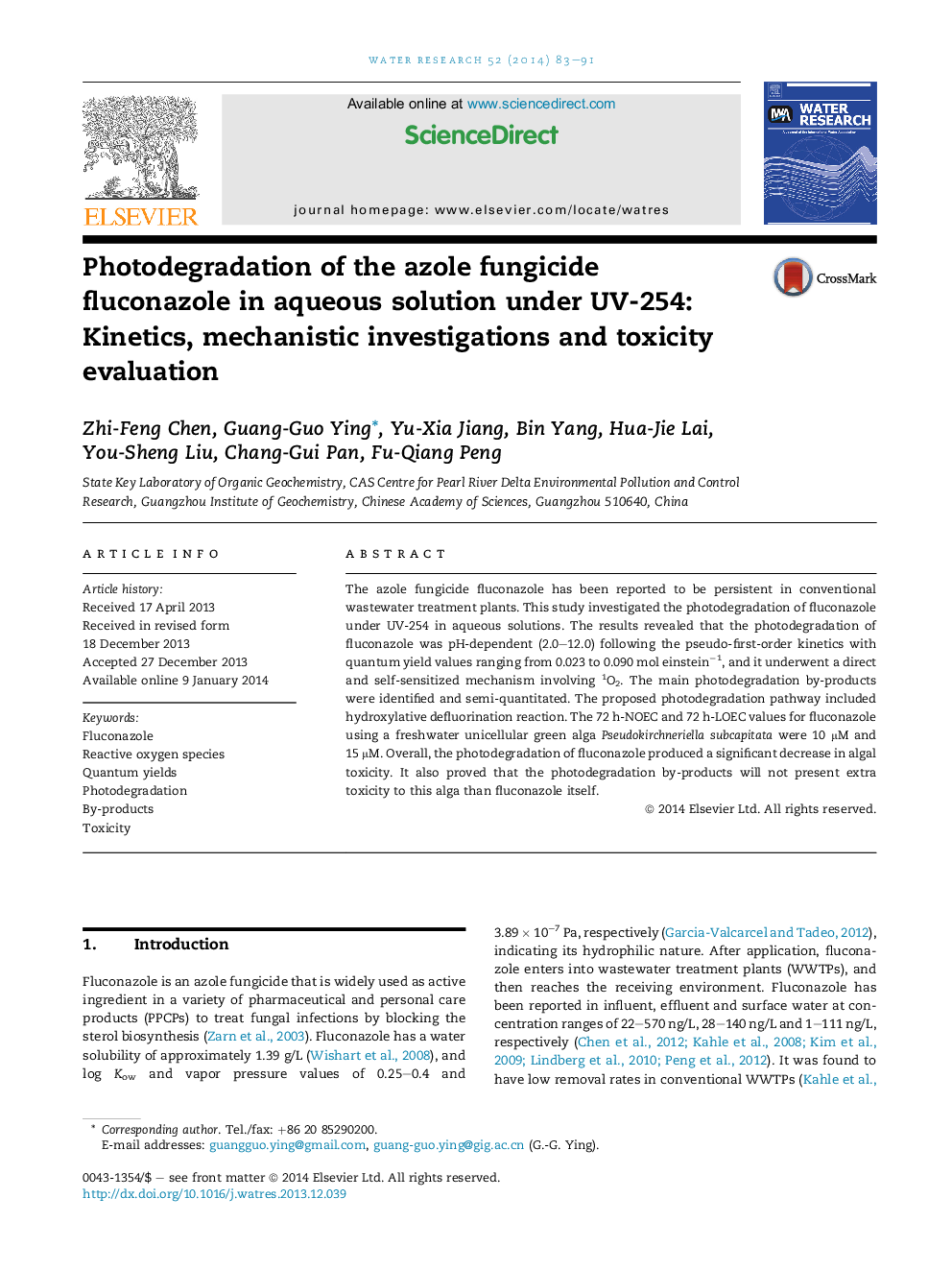| Article ID | Journal | Published Year | Pages | File Type |
|---|---|---|---|---|
| 4481665 | Water Research | 2014 | 9 Pages |
•The photodegradation of fluconazole (FZ) is found pH-dependent (2.0–12.0).•FZ is photodegraded via direct and self-sensitized mechanism involving 1O2.•The proposed pathway of FZ photolysis includes hydroxylative defluorination.•FZ photolysis decreased algal toxicity and its byproducts showed no extra toxicity.
The azole fungicide fluconazole has been reported to be persistent in conventional wastewater treatment plants. This study investigated the photodegradation of fluconazole under UV-254 in aqueous solutions. The results revealed that the photodegradation of fluconazole was pH-dependent (2.0–12.0) following the pseudo-first-order kinetics with quantum yield values ranging from 0.023 to 0.090 mol einstein−1, and it underwent a direct and self-sensitized mechanism involving 1O2. The main photodegradation by-products were identified and semi-quantitated. The proposed photodegradation pathway included hydroxylative defluorination reaction. The 72 h-NOEC and 72 h-LOEC values for fluconazole using a freshwater unicellular green alga Pseudokirchneriella subcapitata were 10 μM and 15 μM. Overall, the photodegradation of fluconazole produced a significant decrease in algal toxicity. It also proved that the photodegradation by-products will not present extra toxicity to this alga than fluconazole itself.
Graphical abstractFigure optionsDownload full-size imageDownload high-quality image (156 K)Download as PowerPoint slide
